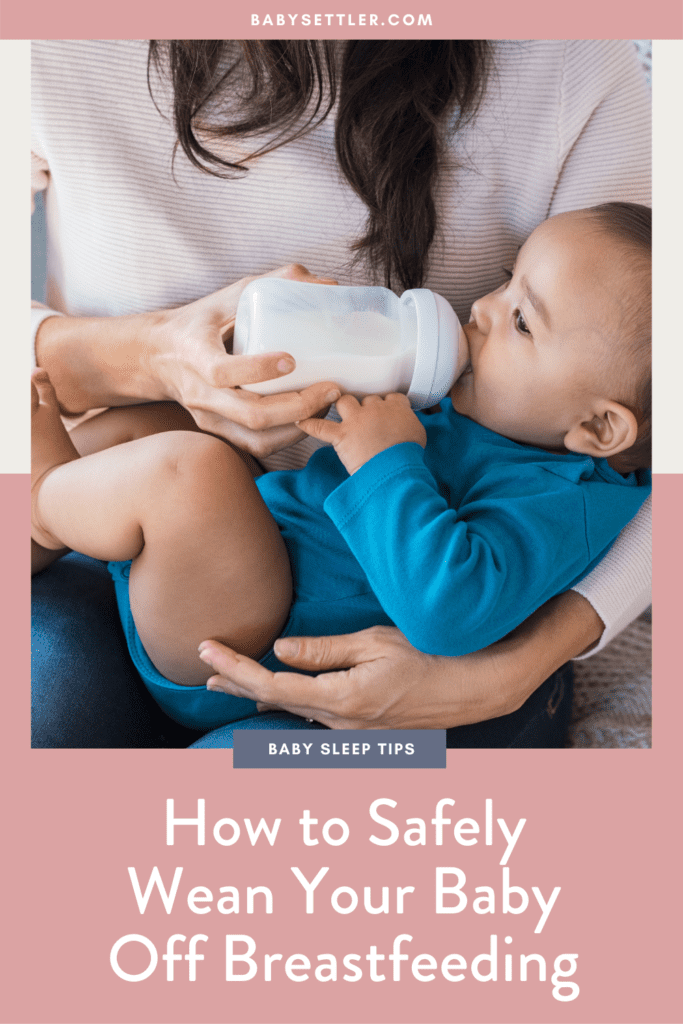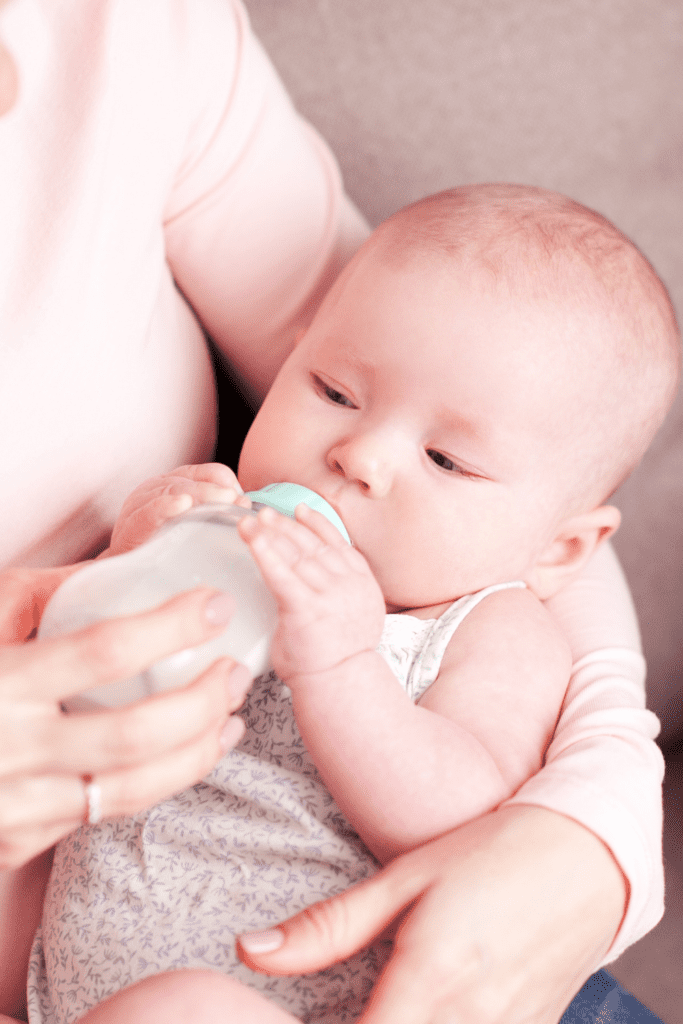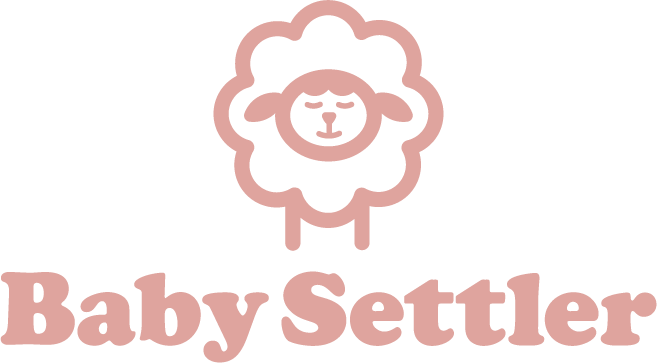
Looking to stop breastfeeding? It’s not as simple as just going back to ordinary bras and giving your baby a bottle of formula. Breastfeeding weaning cold turkey is a lot to expect from you and your baby. You’ve got to give your body time to adjust.
This means weaning your baby off slowly so that they can get used to drinking from a bottle and you can avoid clogged ducts, pain, and mastitis.
Remember, breastfeeding works on a supply and demand basis, so to decrease your milk production, you’ve got to lessen the demand on your body.
If you have an average supply of milk, drop one feed a week, then wait a week before you drop another one – it will take three to five days for your body to adjust to this new, lesser demand.
As your body adjusts, you will experience engorged breasts. However, this tells your body to suppress milk production because the milk that’s engorging your breasts isn’t being used. This can be uncomfortable, though, so manage this period with cold therapy. A bag of frozen peas applied to the breasts can work really well.

It’s important that you do not pump any milk! This will tell your body that milk is being used, so more needs to be produced.
If you have an oversupply of breast milk, Medela advises block feeding to get your supply to a manageable level. From there, you can start to drop feeds as above.
“With block feeding, you breastfeed your baby whenever he wants for a period of four hours, but from one breast only. Your other breast will become very full of milk. As your breast milk contains something called ‘feedback inhibitor of lactation’ (FIL), the excessive fullness signals that breast to slow down milk production. It’s your body’s way of ensuring that your breasts don’t fill up endlessly.”
However, it is advisable to work with a Lactation Consultant before you try this. Weaning with an oversupply of breastmilk can get complicated, so it’s essential to develop a safe and effective plan.

If you’ve been exclusively breastfeeding since your baby was born, you’ll then also have to transition them over to a bottle when you start weaning them off breast milk.
To introduce your baby to a bottle:
- Get them used to the bottle’s nipple by giving them a small amount of milk in the bottle after a regular feeding.
- Choose a wide-based bottle nipple so that it’s more similar to a human breast.
- Allow someone else to feed them with a bottle (especially in the beginning). Your baby may get confused as to why you’re not breastfeeding. Getting someone else to give them the bottle may be helpful.
For more on how to introduce your baby to bottle feeding, click here.

If you’re planning on transitioning your baby to formula, it’s perfectly okay to get your infant used to formula by mixing it with breastmilk. However, only mix prepared formula with breastmilk, not just the powder. Always prepare the formula with clean water and according to the package instructions.
Very Well Family explains that parents should be prepared for some changes once their baby is fed formula, including their little one waiting longer between feedings, “Since your baby can digest breast milk more easily than infant formula, the latter allows them to feel fuller longer. They may not seem as hungry as quickly after formula feedings as they do after breastfeeding.”
Due to the different digestion, your baby’s poop could also change consistency and they may poop less.

When it comes to formula feeding, I recommend Bobbie Organic Infant Formula. It’s easy on tiny tummies and supports immunity and brain development.
Mama, if breastfeeding is no longer part of your motherhood journey, create a plan to slowly wean your baby off. Taking it slow is way more comfortable in the long run for you and your little one.




